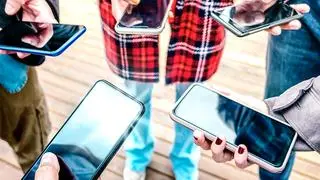To cater to the 40 per cent of mobile phone users who use feature phone and those that use landline phones, the centre has now implemented Interactive Voice Response System (IVRS) for Covid-19 surveillance. The service is being provided in as many as eleven regional languages.
While up to nine crore persons have downloaded the Aarogya Setu mobile phone app for accessing Covid-19 related data, until May 4, this is just approximately 7.2 per cent of the entire Indian population (over 125 crore persons).
“We have received these app downloads from users who are using android or iOS mobile operating systems. However, there is still a substantial chunk of population, especially in rural areas that cannot access smart phones. The IVRS technology has been devised for them,” said a senior official from Niti Aayog involved in development of the system.
According to Telecom Regulatory Authority of India’s data, over 40 crore Indians use feature phones .Additionally there are 2.1 crore landline users and 88 per cent of India is connected to any kind of phone.
How the IVRS system will work
“In order to access IVRS service for COVID19, the user will have to give a missed call to a toll-free number 1921 and they will get a call back requesting for inputs regarding their health, symptoms, travel history, proximity to a suspected or confirmed COVID19 patient and so on,” explained the official.
“The input provided by the citizen will be made part of Aarogya Setu database and information is processed to send alerts to the citizen on the action to be taken to ensure their safety. Based on the responses given, users will receive text messages indicating their health status and also will get further alerts regarding their health,” the official said.
How it works in smartphones
In smartphones, the app calculates the real-time risks, based on user interaction, using bluetooth technology, algorithms and artificial intelligence.
Concerns about risking privacy while sharing personal data on Aarogya Setuhave been raised.
“The app platform is an ongoing process in development and in case some of the answers of the user suggest Covid-19 symptoms, the information is sent to a government server. The data will then helps the government take timely steps and initiate the isolation procedure if necessary and also alerts if someone comes in close proximity with a person tested positive,” the official stated.
Drawback in feature phones & landlines
While the smartphone app keeps the users informed whether they cross paths with a Covid-19 infected person, this won’t be possible in real-time for feature phone or landline users.
“While the smartphone app requires the user to keep their bluetooth option on at all times and tracks the user on real-time basis, this will not be possible on feature phone device. But the data as disclosed by feature phone or landline user will be fed in the database of the app,” the official said.
“The Aarogya Setu team is also developing a separate app for Reliance Jio smartphone users as Jio operates on a separate mobile operating system from android and iOS, which is known as Kai OS system. This will require development of a separate app which will be implemented soon,” said the official.







Comments
Comments have to be in English, and in full sentences. They cannot be abusive or personal. Please abide by our community guidelines for posting your comments.
We have migrated to a new commenting platform. If you are already a registered user of TheHindu Businessline and logged in, you may continue to engage with our articles. If you do not have an account please register and login to post comments. Users can access their older comments by logging into their accounts on Vuukle.